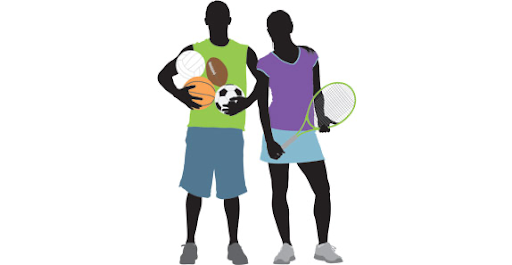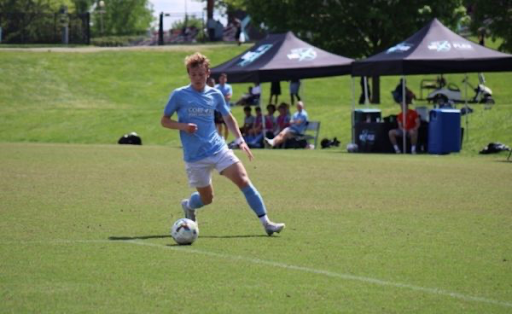Are Single Sport Athletes More Prone To Injuries Than Multi-Sport Athletes?

Photo Source: Chihealth
January 13, 2023
A major topic of controversy has been whether one-sport athletes are more prone to injuries than multi-sport athletes. Lots of people feel as though being a multi-sport athlete allows your body to function in different ways, whereas single-sport athletes are repetitively using the same parts of the body in the same ways. Continuously using the same muscle groups can cause them to break down and not work as intended. Many body parts weren’t designed to be used over and over again, causing burnout. Your body can only handle so much!
From a young age, you are thrown into life situations that are not easy, to say the least. For example, deciding if you want to fully commit and train hardcore for future potential or if you want to just do a sport as a hobby for your younger years. There is a lot that goes into choosing what sport you want to partake in and build a future off of; you need to be dedicated, passionate, and motivated in that specific sport.
While some kids decide to do multiple sports, others choose to go all in on one specific field of interest. There are hundreds of different sports, and some kids struggle to just focus on one, so they go through the years participating in a variety of sports.
A major topic of controversy has been whether one-sport athletes are more prone to injuries than multi-sport athletes. Lots of people feel as though being a multi-sport athlete allows your body to function in different ways, whereas single-sport athletes are repetitively using the same parts of the body in the same ways.
Single-Sport Athletes
Athletes specializing in one sport instead of multiple sports are more likely to acquire injuries. For instance, a single-sport athlete is more prone to attain many overuse injuries such as sprains, fractures, and concussions, along with burnout and loss of interest.
Nora Gilman, director of recovery and performance, found that a mass amount of students are highly specialized and trained in one sport for more than eight months in a year. This results in major hip and knee injuries over time. The more your body grows and develops, the more careful you need to be; Knowing when enough is enough, and not pushing your muscles and joints to their breaking point.
Brady Lewis, a senior who is online schooled for Vlacs, is a single sport athlete. He is a high-level soccer player who previously played for the New England Revolution and is currently playing for Seacoast United. He committed to UNH to continue his soccer career. To do so, he trains 11 out of the 12 months and has consequently sustained a hip avulsion fracture and many other minor foot injuries. My injuries were setbacks, but I was able to work other parts of my body in the meantime to gain strength in areas I am not constantly using. Brady stated, “It has a very positive effect because I have been able to put all my focus into this sport and train for this one specific sport my entire life.”

Being a one-sport athlete not only forces individuals to work the same muscles for several hours a week, but it also requires an insane amount of dedication. It is not easy to get up every day and repeat your daily schedule over and over again; It takes devoted time, effort, perseverance, and motivation.
Some say that being a single sport athlete is asking for serious problems down the road. Others say that being a one-sport athlete is better, as it allows people to put forth their best effort and dedicate themselves to that specific sport to be the best they can be.
Christopher DeMarco, age 46, was a Division II Bloomsburg University swimmer. He stated that his “Shoulder is all but gone,” and he “suffered an ACL/Meniscus injury, broken hand, and broken sternum.” He was competing on a scholarship and trained eighteen hours a week and was never given any rest to heal his muscles. Christopher explained his career as an athlete as a job, but without the pay. “DeMarco learned throughout his career as a single-sport athlete, to have discipline. However, despite the mass amounts of success, he sustained numerous overuse injuries and struggled with burnout.”
Multi-Sport Athletes
On the surface, both single and multi-sport athletes are alike in being competitive and dedicated.
Multiple sports are good for kids at the middle and high school levels because different sports work different mechanics. For instance, it gives a baseball player a rest from using their upper extremity to shifting into using their lower extremity in sports such as soccer.
The use of different muscle groups will accentuate the athlete’s mechanics and strength when they resume the sport they were taking a break from. High school athlete injury rates are on the rise, meaning the need of training different parts of the body are insanely necessary.
Pamela Lewis, age 43, was a multi-sport athlete in high school. She was a dancer year-round, and played basketball, field hockey, and softball. She danced 10 out of 12 months per year, but only 3–6 hours per week. Pam stated, “I think being a multi-sport athlete allowed me to use different muscle groups, so the same areas of my body weren’t constantly being used. I think this may have helped my body from serious injury… I was never overworking the same muscles and body parts.”
Still to this day, she doesn’t have any effect of body damage from her sports as she was continuously using her body in different ways. Her cross-training forced her to gain strength throughout her body so that there was not any buildup of strength in one area versus another area. She had enough time to heal each part of her body as she trained and worked on other muscle groups.
Many people believe that the only way to get recruited and receive a scholarship is by being a single sport athlete, although your chances of burning out and facing overuse injuries before college are high when only focusing on one sport your entire life.
There are many pros and cons to being a multi-sport athlete and a single-sport athlete. Considering the amount of time and effort that goes into any sport you choose, the mental aspects sports can play on an individual can make or break an athlete. No matter what path a person chooses in their athletic career, injuries are going to happen. In any case, injuries and burnout can happen to anyone in any type of sport.

Jack Fahey • Jan 19, 2023 at 10:36 am
I haven’t done anything but run since middle school, so I can understand the harms of being a single-sport athlete. I’ve gotten a few big injuries, which resulted in PTs telling me to cross-train. Since then, not only have I not gotten hurt but I’ve started to get better at running, too. A lot can be said for the athletic boost of working all different muscle groups in all different activities. I liked how you included both single- and multi-sport perspectives here, as the contrast did a good job getting your point across. Your solid interviews boost this article even further.